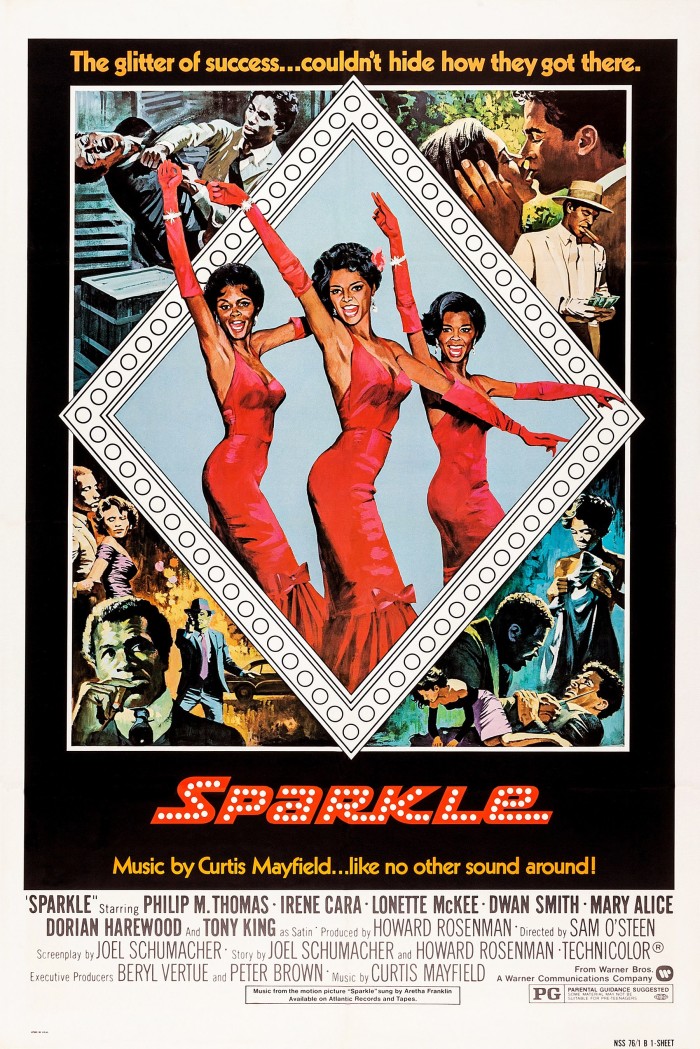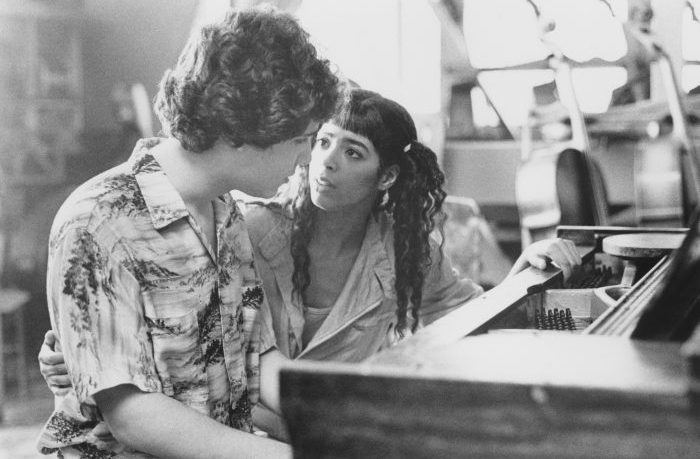Irene Cara walked her own path with a defiant smile. The versatile singer, songwriter, and actress died over the weekend at the age of 63 at her Florida home.
At times, Cara exhibited a Broadway-trained, showbiz DNA that seemed more aligned with singer Barbara Streisand than queen of soul Aretha Franklin. Yet she never shied away from her true superpower: the ability to transform slick early ’80s, headband-adorned anthems into uplifting statements that felt like spiritual testimony.
“I’m gonna make it to heaven/Light up the sky like a flame,” Cara proclaimed on her 1980 debut single, Fame, from director Alan Parker’s Oscar-nominated musical of the same name. The film followed the trials, tribulations and triumphs of students at New York’s legendary High School of the Performing Arts (now known as Fiorello H. LaGuardia High School of Music & Art and Performing Arts). Cara’s work on Fame earned her a top 5 hit on the Billboard Hot 100, two Oscar nominations (including for the piano ballad “Out Here on My Own”) and Grammy Awards for best female pop vocal performance and best original new artist. And she proved to be more than just a singer who dared you to take your eyes off her during the post-disco “Hot Lunch Jam” rave-up and Fame’s landmark street dance sequence.
Cara received a Golden Globe nomination for best actress for her portrayal as Fame’s optimistic yet naive Coco Hernandez (her final scene remains one of that decade’s most heartbreaking cinematic moments). “The movie was shot about six blocks from my apartment,” Cara recalled in a 2018 interview with Songwriter Universe. “So working on the movie felt very much like home.”
In 1981, no star shined brighter than Cara, one of a constellation of Black entertainers and athletes who reached unprecedented crossover popularity throughout the ’80s. From Cara, singers Michael Jackson, Prince and Lionel Richie; Chicago Bulls guard Michael Jordan; and actor Eddie Murphy to singers Whitney Houston, Tina Turner; comedian Bill Cosby; hip-hop group Run-D.M.C.; TV talk show host Oprah Winfrey; and boxer Mike Tyson — white America was eager to elevate these gifted figures – on its own terms. All of a sudden, popular Black stars transcended race.
It was clear that Cara wanted no part of that game. When the subject of her biracial heritage came up during a 1981 Jet magazine cover story, the Afro Latina star, born Irene Escalera on March 18, 1959, didn’t mince words. “We have a tendency in this country that when we say Black it automatically means Black Americans,” said Cara, whose musician father Gaspar was Black and Puerto Rican and her mother Louise was Cuban American. “But that’s a big mistake, and that keeps us divided … I happen to be a Black Hispanic person who was born in this country.”
United Artists/Archive Photos/Getty Images
Soon Cara, who had already released two studio albums including her debut Anyone Can See, would experience the kind of next-level stardom that few Black entertainers during that period achieved. In 1984 she won the Academy Award for best original song as one of the co-writers of “Flashdance … What a Feeling,” from the soundtrack album for Flashdance, the movie that put actress Jennifer Beals on the map. “Take your passion/And make it happen!” sang Cara, who would also receive a Grammy in 1984 for best pop vocal performance, female, spending six consecutive weeks at No. 1.
“Thank you brilliant Irene for your open heart and your fearless triple threat talent,” Beals posted on Instagram in tribute to Cara. “It took a beautiful dreamer to write and perform the soundtracks for those who dare to dream.”
Such glowing words are a fitting tribute for an artist who started performing at a young age. At 7, Cara, who grew up in a family of musicians, made her professional debut singing and dancing on local television. Two years later, she landed a Broadway gig in the 1968 production of Maggie Flynn alongside future The Wiz star and singer Stephanie Mills and Emmy-nominated actor Giancarlo Esposito. And she scored a coveted spot on The Tonight Show Starring Johnny Carson in July 1971.
More television gigs followed. Cara was cast on the PBS children’s show The Electric Company and on Roots: The Next Generations. But it was Cara’s titular role in the 1976 movie classic Sparkle that introduced her to seemingly every Black household in America. In 1978, she appeared in the Broadway musical revue Ain’t Misbehavin’. Record labels were soon calling, and Cara began racking up studio session work as a background vocalist for disco singer Vicki Sue Robinson, musician Lou Reed, keyboardist George Duke, and disco singer Evelyn “Champagne” King. Cara’s friend Luther Vandross, who rose through the ranks of the music industry with her long before they became stars, recorded a cover of her 1982 track “Anyone Can See.”

Cara’s industry connections later proved to be beneficial during the recording of some pivotal compositions. “I brought a lot of New York’s greatest session singers to Michael [Fame composer Michael Gore],” she said in a 2020 Shondaland feature celebrating the 40th anniversary of Fame. “He didn’t know Luther Vandross. I did. He didn’t know about Vicki Sue Robinson. I did. Michael wasn’t in with all the badass session players and singers that I knew. I never got any money for it. Never got acknowledged. I wrote ‘Hot Lunch’ to this very cool bassline that he came up with — that was the whole damn song.”
By the mid-1980s, the consensus was that Cara’s trajectory was limitless. She followed up her “Flashdance …” collaboration with synth-pop pioneer Giorgio Moroder with the 1984 top 40 single “Breakdance,” and co-starred in the Clint Eastwood and Burt Reynolds gangster comedy flick City Heat. There was even talk of headlining her own sitcom.
But following her worldwide acclaim, Cara suffered a career spiral, a victim of what she described as industry blacklisting.
In 1985, Cara sued Al Coury Inc. and Network Records for $10 million for songwriting credit and unpaid royalties for her work on the Flashdance soundtrack, years before Prince’s game-changing legal dispute with Warner Bros. over his master recordings. “I’ll never be that trusting again,” she confided to People magazine in 2001, “believing accountants and lawyers have my best interests at heart.”
Cara eventually was awarded $1.5 million by a California jury in 1993, but the damage was already done. “All of a sudden, I was hearing stories about how difficult I was to work with, ridiculous rumors about drugs and what a diva I was,” she recalled.
Cara returned to her musical roots in 1992 in the revival for Jesus Christ Superstar and continued to perform overseas and in America on the club circuit. And she never stopped writing and recording. During a 2019 episode of her podcast The Back Story, Cara broke down her artistic process. “Very naked, just vocal and piano and a great lyric and a great story within the lyric, those are the kinds of songs I relate to as a songwriter,” she said.
How fitting was it that upon her death a strikingly diverse range of mourners sang her praises from Fame co-star and groundbreaking television director Debbie Allen and Red Hot Chili Peppers bassist Flea to the Roots’ Questlove and veteran Tony-nominated Latino actor John Leguizamo. And as singer-songwriter Lenny Kravitz said, “Irene Cara, you inspired me more than you could ever know.”
Same, Lenny. Same.
Source: https://andscape.com/features/irene-cara-experienced-both-the-highs-and-lows-of-fame/



